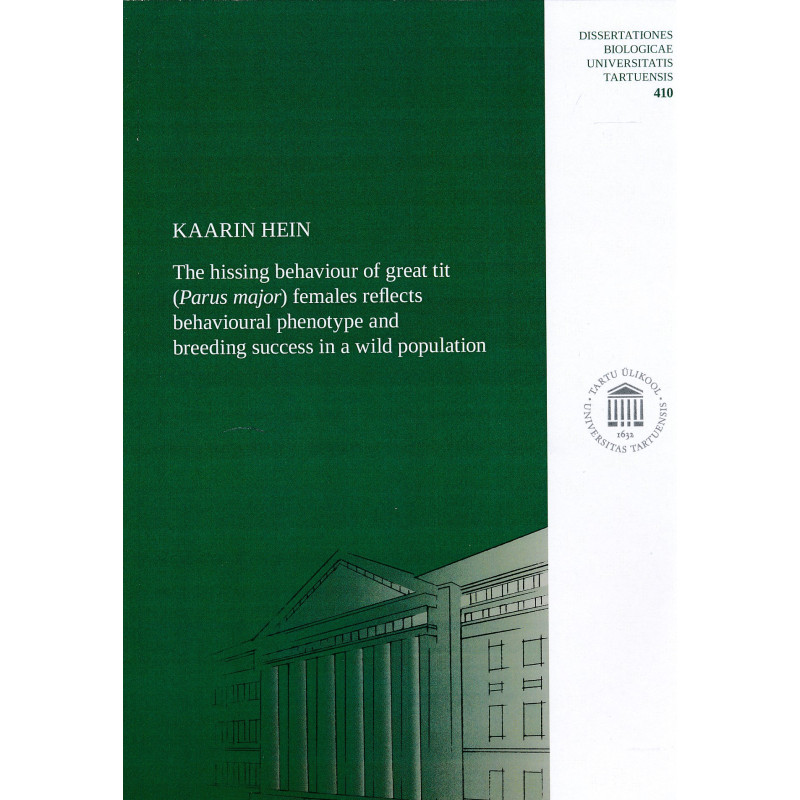



Full title: The hissing behaviour of great tit (Parus major) females reflects behavioural phenotype and breeding success in a wild population
Tartu : University of Tartu Press, 2022
ISBN: 9789916270707
95 p. : ill. ; 25 cm
Dissertationes biologicae Universitatis Tartuensis ; 410
Softcover new book
Doctoral theses defended at the University of Tartu, summary in Estonian
Predation is a major aspect affecting animal survival and reproductive success in the wild. Anti-predator behaviours greatly vary between species but also among individuals of the same species. Differences within a species may be derived from differences in personalities. Several bird species, including the great tit, have evolved a specific vocal response towards a threatening situation – the hissing call – but not all individuals elicit hissing. I investigated the hissing behaviour of female great tits by presenting a great spotted woodpecker decoy – a species that is a common nest-predator of cavity-nesting birds. I compared breeding characteristics, the number of nests depredated by predators, nest-site preferences, and differences in the genotype over four years. According to my results, the response type of female great tits varied within the population, but the individual behavioural type remained relatively consistent in time. Start of egg-laying or clutch size did not predict whether the female hissed or not, but birds that did not hiss raised more fledglings. Hatching success did not differ between hissing and non-hissing birds. Hissing females preferred to nest further away from conspecifics and were more likely found in a coniferous than in a deciduous forest. Nest depredation rate was not related to the propensity of hissing birds. Taken together, whether a female hisses or not may depend on the female’s personality and may be regarded as a personality trait. The same as females differ in their personalities, they differ in the way they interact with conspecifics or predators, and they may even differ in their parental abilities. As natural selection has maintained different behavioural types within the population, it is likely that the success of the different behavioural types may be found in differences in survival or breeding success.